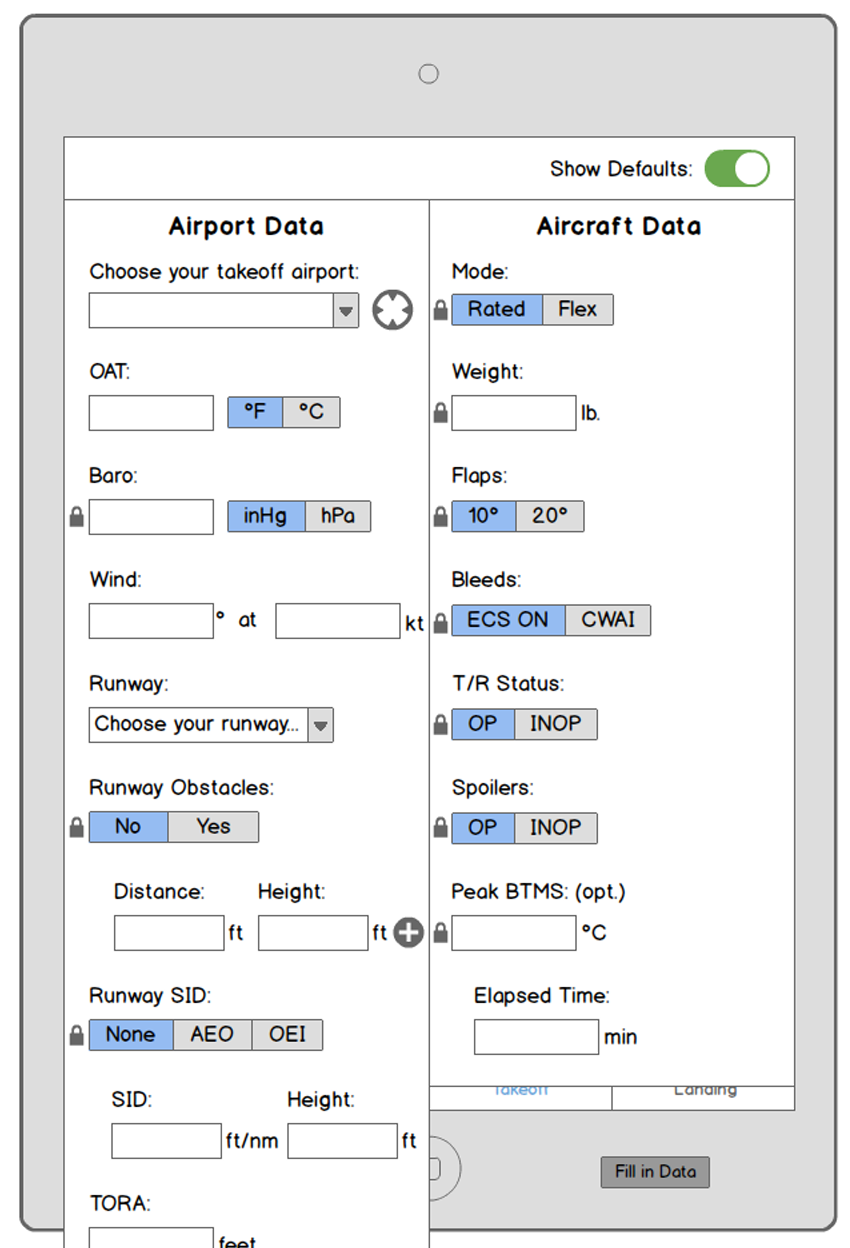Performance
Overview
The Performance app was developed for Gulfstream pilots to calculate takeoff and landing distances based on airport and aircraft configurations. The manual process took up to 20 minutes per calculation and was error-prone - a significant risk in a safety-critical environment.
My contributions focused on leading all research activities, producing wireframes informed by pilot input, and providing ongoing developer support through implementation. A senior designer partnered on final visual design and polish.
Home screen of the Performance app - streamlined entry for performance calculations.
Discovery & Research
I facilitated interviews with pilots and performance engineers to understand their manual process and expectations for a digital tool.
To determine how best to structure the large number of inputs, I designed and ran a card sort with pilots, which revealed how information should be grouped. The results showed that pilots expected airport-related fields and aircraft-related fields to be kept distinct – a finding that shaped the early design.
Ideation & Initial Design
I created wireframes that reflected these groupings, with inputs separated into Airport Data and Aircraft Data. This structure reduced cognitive load by aligning with pilots’ mental models of how they approach performance planning.
Early wireframe - inputs organized into Airport Data and Aircraft Data sections, reflecting pilot workflows.
Testing & Iteration
I led two rounds of usability testing with pilots.
In the first round, we provided specific inputs for them to enter.
In the second, we asked pilots to “perform a successful calculation” without guidance, to observe natural workflows.
This revealed that pilots consistently scanned every input field before calculating - even those unlikely to change. This insight shaped a critical design decision: keeping all inputs visible rather than hiding or collapsing fields.
Design Evolution & Final Design
The final design refined these wireframes into a visually polished interface, while preserving the validated structure. A unique challenge was ensuring the interface could be used safely in night flight operations.
I designed and facilitated the testing protocol for night vision validation:
Pilots sat in a dark room for 20 minutes to adjust their vision.
They then evaluated the app’s dark scheme on an iPad.
Finally, we confirmed its usability during a live G550 production test flight.
Final output screen - refined interface presenting results in a clear, structured format.
Implementation & Outcome
I partnered closely with developers during build, answering questions, clarifying requirements, and ensuring design intent was preserved.
While we did not capture detailed adoption metrics, the impact was significant:
The app replaced a 20-minute manual calculation with a faster, validated workflow.
It reduced the risk of incorrect calculations - directly improving flight safety.
It became Gulfstream’s first app with a night-vision-safe interface, setting precedent for future projects.
Leadership & Influence
My role included:
Leading all customer interactions and research activities, from interviews and card sorting to usability and night vision testing.
Producing wireframes that translated research findings into an early, testable structure.
Providing ongoing developer support to ensure implementation quality.
Although I partnered with a senior designer on the final visual design, my research leadership and process contributions were critical to ensuring the app was safe, usable, and aligned with pilots’ real-world workflows.

